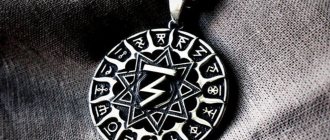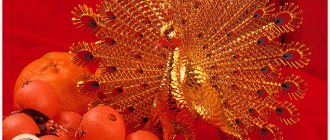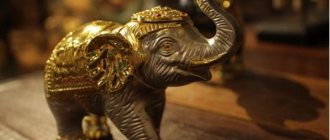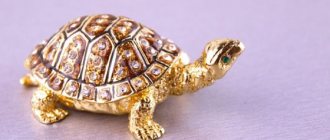In Japan, it has long been believed that the crane lives for a thousand years and brings happiness. Therefore, it was called a symbol of longevity, a bird of happiness, and numerous legends and traditions were associated with it. The paper crane appeared many centuries ago, at the dawn of origami in the Land of the Rising Sun. This figure is a simple one: it only takes 12 steps to create. According to legend, if you fold a thousand origami cranes, your most cherished and desired dream will come true.
History of the Red-crowned Crane
Nowadays, there are very few red-crowned cranes left in the entire world. These amazing birds are still considered sacred and are valued by the Japanese not only for their beauty. Tantezuru - this is the name in Japan for this majestic bird with a red cap on a black head - was called the “man in feathers” , they attributed wisdom and incredible longevity to him, and countless legends and fairy tales were composed with his participation.
A distinctive feature of the Japanese crane is its amazing and amazing dances. Other species of these large birds also dance, but this is primarily due to the mating season. For the Japanese crane, dancing is a state of mind. Perhaps this is a way of communicating with other birds in the flock or expressing emotions, but Tantezuru do this very often. Just as a nightingale closes its eyes while singing, so the crane forgets about everything in the world thanks to its delightful dance.
The Japanese love to contemplate and find beauty in everything that surrounds them. Therefore, the majestic synchronized movements of these birds simply could not go unnoticed. The crane dance can be single, paired, and there are often cases when the whole flock dances - this unforgettable spectacle is reflected in Japanese culture, in which the crane plays one of the most important roles. Tantezuru was depicted on various household and interior items, fans, painted vases, as well as holiday emblems, postage stamps and memorial signs.
In Japanese culture, along with the turtle, the crane has become a symbol of longevity, prosperity and hope. It’s not for nothing that the tradition of folding these beautiful birds out of paper began in order to fulfill your most cherished desires. There are known cases when even fatal diseases receded and a person recovered - the crane figurines made by himself or his family and friends gave him strength to fight the disease and instilled in him faith in healing.
A symbol of peace
In the middle of the last century, the whole world was shocked by the story of the little girl Sadako Sasaki, who survived the atomic explosion in Hiroshima at the age of 4 and was stricken with radiation sickness. This girl, until she was 12 years old, was a very ordinary child - she went to school, loved to play and run, and was very friendly, cheerful and life-loving. However, the consequences of the terrible disaster soon made themselves felt, her health worsened, and then one day she was given a terrible diagnosis - leukemia.
Cranes in Feng Shui - varieties
According to Feng Shui, cranes are used as a talisman that bestows health and long life, since in nature these birds live quite a long time. You can see both a “single” symbol and in combination with others.
Sadako Sasaki
For example, in China, a crane or cranes are often depicted (in paintings or panels) with other symbols of longevity - a pine tree or a cypress tree. In Japan - with chrysanthemum and pine.
A crane with a turtle (most often the crane stands directly on the turtle) means long life, happiness and protection from troubles and various troubles in life.
A crane with a stone in its paw is a symbol of vigilance and protection, faithful guard.
In order to protect its life from predators, the crane stands in the swamp on one leg and clutches a stone in the other. As soon as he dozes off and relaxes, a stone immediately falls and wakes up this sentry, tirelessly guarding his life and the life of his family. This characteristic feature of the crane is reflected not only in Feng Shui, but also in world heraldry. The image of a crane with a stone was widely used on ancient noble family coats of arms.
Sadako Peace Garden in Santa Barbara
A crane with sand pouring out of its beak means silence and prudence.
A crane with a snake in its mouth represents the struggle between good and evil.
Two cranes in a nest or a crane mating dance is a symbol of a happy married life, fidelity and a strong union.
A flying crane means “high-flying bird,” that is, a symbol of achieving its goal.
Crane with peaches – good health and longevity.
Application of figures
The step-by-step instructions for an origami crane are simple, and even a beginner can handle it. The finished product is very elegant and can be used as a decoration for a card or a themed party. There are many ways to use these figures:
- Paper cranes will be a wonderful addition to any interior - in minimalism you can use monochromatic figures, and in the nursery you can place birds made of multi-colored craft paper.
- You can assemble a mobile from figurines, add a drop of lavender oil to each and place it above the bed - this decor will speed up the process of falling asleep and improve the quality of sleep. You can hang cranes with orange or grapefruit essential oil above your desk to stimulate performance and improve body tone.
- Tantezuru garlands under the ceiling at different heights look very beautiful. Such a decorative element will give the room an oriental flavor and improve your mood.
- You can use a small crane as a pendant in a car - initially carrying positive energy, it will help moderate the manifestation of negative emotions on the road and prevent accidents. And if you apply a little of your favorite aroma - essential oil or perfume - you will get a wonderful air flavoring. True, you can’t overdo it here - unlike a room, there is much less space in a car, so the smell can get intense.
- You can follow the example of the Japanese and give such a figure to a loved one, wishing them longevity, prosperity, prosperity and the fulfillment of their cherished desires.
In any case, the crane is intended to bring joy and hope, and a hand-made gift will emphasize the importance of the recipient to the giver.
History and symbolism of paper “tsuru”
The origami crane is one of the oldest paper models, originally intended to decorate places of worship.
In the Shinto religion, there was a tradition of hanging “tsuru” garlands on temple walls, thus turning to the deities with a request for the recovery of loved ones, a good harvest, protection from misfortunes, and so on. It was believed that the more paper cranes a person makes, the faster and more fully his wishes will come true. Beautiful and highly revered birds in Japan have always been associated with joy, elation and beneficial changes. But the bright tradition of making origami cranes in the middle of the 20th century unexpectedly acquired a tragic color. The whole world knows the story of a Japanese schoolgirl from Hiroshima, Sadako Sasaki, who died of leukemia in 1955. It is believed that the 12-year-old girl's illness was the result of radiation exposure from the atomic bombing of her hometown. The epicenter of the explosion was only one and a half kilometers from the house where 2-year-old Sadako lived at the time.
When the girl learned her terrible diagnosis, she began folding the treasured cranes, hoping that after the thousandth bird, her health and former strength would return. Alas, Sadako died, joining the list of victims of the most terrible military action in the history of mankind. But her monument at the Children's Peace Memorial in three cities: Hiroshima, Seattle and Santa Barbara is annually decorated with huge garlands of paper “tsuru”, which have become symbols of peace and hope. And in 2000, near the Nobori-cho school, where the courageous girl studied, a monument to an origami crane appeared with the inscription: “Our prayers are in it.”
Today, “tsuru” is once again associated exclusively with positive aspects. Several new modifications of the popular bird have been invented, including varieties with a gift box body and the popular "Kawasaki rose."
Step-by-step instruction
It is very simple to make a crane out of paper according to a detailed description of the stages of its manufacture. Having folded the first 2-3 tantezuru, you no longer need any hints.
Basic blank
The first and fundamental element of this product is the double square. This blank is very often used in origami for various figures of flowers, animals and birds. This basic element is formed as follows:
- A square sheet of paper is folded diagonally. If you only have a rectangle, it's easy to make a square out of it. To do this, bend any upper corner down to the base and combine the sides. Smooth the fold line. The excess paper can be cut off to create a square piece of paper with a diagonal fold.
- Next, the sheet is unfolded and folded along a different diagonal. The fold is also pressed - just run it with your finger or nail.
- Now you need to unfold the paper again and bend it in half - first on one side, then on the other.
- After this, the newly unfolded piece of paper is placed in front of you at any angle towards you. All other corners need to be bent to the bottom, starting from the side ones. Using the marked fold lines, this is easy to do.
- The result is the same double square.
How to choose a beautiful crane craft?
To decide which craft to choose to create beautiful origami, you need to focus on several important selection criteria:
- classic origami without cutting or gluing;
- a complicated or combined version of the craft, which includes the use of additional materials to connect parts and allows gluing;
- “conditional” origami, which means that the ancient art itself is taken only as a base, but the creator of this masterpiece is not limited in any way in his imagination and possibilities of using materials.
Naturally, it will be difficult to make a choice right away, and if you don’t want to figure it out for a long time, then it’s best to pay attention to the simplest options.
If you still have some experience in creating origami, then you can focus on the photo of an origami crane and choose among them the version of the craft that you simply like the most.
Next, you should find step-by-step instructions and arm yourself with the required materials.
Materials for creating a crane using origami technique:
- a square sheet of paper of any color;
- scissors.
Crane with open wings
- Fold the sheet diagonally twice in different directions.
- Taking into account the resulting folds, fold the sheet into a double square
- The top layer of the craft has side corners; they need to be folded towards the center line. This is the base for the neck and head of the bird
- Fold the top edge down.
- Spread what you received
- Forming an elongated rhombus
- Flip the piece over to the other side by rotating it.
- We form the wings of the bird. We bend the right side on the sides and get two folds.
- We straighten them starting from the bottom
- Change the outer fold to the inner one, correcting the fold. This is how you get two from one fold. We do the same with the opposite side. Now we have four folds.
- Again we make a pair from each fold, bending them towards each other
- Straighten the folds, changing them from outer to inner and form new folds
- Repeat the procedure with the second fold.
- So, there were four folds on each side.
- Bend the protruding corner to the right
- Turn the future crane over to the reverse side
- On the left, bend at a right angle, smoothing the fold only to a horizontal line.
- And also bend at the top. The result was the folds of the future neck of the craft.
- Let's slightly change the appearance of the workpiece by folding its right side lengthwise and the adjacent side vertically.
- Bend the top left side 90 degrees. Here we form the inner fold.
- Bend the tip to make a bird's head.
Our paper bird is ready.
As you can see, there is nothing complicated in the process of making this paper product. Feel free to get down to business with your children.
Meaning of origami crane
Perhaps the paper crane pattern is one of the oldest, as it was first mentioned in Japanese origami books of the 18th century. The meaning of the origami Japanese crane is interpreted as a wish-granter. Even in those distant times, a legend arose according to which, if you want your most cherished dream to come true, you need to make a thousand birds out of paper. Of particular importance is that the cranes made must be distributed to family and friends. By the way, it is generally recommended to distribute these products to strangers. Such a gift means that the person thereby does 1000 good deeds. So go ahead, towards the fulfillment of your desires.
Kotobukizuru for special occasions
For festive interior decoration, the Japanese have a special variety of cranes called “Kotobuki Tsuru”. The models are distinguished by a fan-shaped tail, slightly reminiscent of a peacock. Most often, they are used to make pendants, additionally decorated with beads, ribbons and braided cords. If for traditional “tsuru” you can use any paper, here special sheets with a beautiful heterogeneous texture called “washi” are highly recommended. They are made from the bark of the gampi tree, Japanese mulberry or bamboo. Due to the special weaving of the fibers, washi paper is thin and very durable; it is almost impossible to tear it with your hands.
Detailed diagram of the festive origami crane:
A similar origami toy can be given as a gift for a wedding, birthday or housewarming. It is believed that “Kotobuki Tsuru” brings happiness, prosperity and prosperity to the home. If the scheme for creating an exquisite talisman is not entirely clear, you can make it by following the video instructions:
How to make it yourself
To assemble everyone’s favorite wish granter, you need to carefully study the diagram of how to make an origami crane, which describes in detail all the stages of creating a figurine. You don’t need any additional tools here, just a piece of paper, the main thing is that it is thick.
Making products using this origami technique, if you learn the special symbols used to make sketches of diagrams. So, in order to create such a figurine, you need to take a square sheet of paper.
And fold it diagonally:
The upper triangle must be straightened to form a square.
The corner is straightened back into a square, as follows:
We bend the top layer of the side corners into the middle:
Now we return the corners to their place.
The top layer of the resulting bend turns upward.
Now the workpiece is turned over again and bends are made in the middle.
CRANE
CRANE
1.
A large marsh migratory bird with a long straight beak and long legs and neck. Cranes build nests in swamps.
2.
A thin long pole at a well, serving as a lever for raising water (reg.).
“A crane at an old well, above it like a boiling cloud.” Akhmatova
.
3.
A primitive machine for lifting weights, e.g. for lifting hay onto a stack.
Ushakov's Explanatory Dictionary.
D.N. Ushakov. 1935-1940. Synonyms
:
See what “CRANE” is in other dictionaries:
- CRANE, crane, crane husband. Zhurka, Zhurka, Zhuranka, Zhurochka, Zhurushka · belittles. ino gherav, crane, etc. long-legged, large, migratory bird of the heron family, Ardea grus or Grus cinerea. We have two types of them, large and small, sterk. Gr. leucogeranus... ... Dahl's Explanatory Dictionary
Crane, crane, demoiselle, beetle, bird, curlyka, crane, arama, Siberian crane Dictionary of Russian synonyms. crane noun, number of synonyms: 15 aram (2) ... Dictionary of synonyms
- (Latin Grus) constellation of the Southern Hemisphere ... Big Encyclopedic Dictionary
CRANE, me, husband. 1. A large wading bird with long legs and a long neck. Grey, white w. Family of cranes. Life in the sky (also translated: about something desirable, but unlikely). 2. A device for lifting water from a well, a long pole that serves... ... Ozhegov’s Explanatory Dictionary
crane
- crane, gen. crane (wrong crane). The crane form is found in dialect speech; in a literary language it is permissible only with stylization. For example, M. Dudin: “The snowball is crunching. Buckets rattle, an icy crane creaks" (Bonfire on... ... Dictionary of pronunciation difficulties and stress in modern Russian
Cranes Gray crane Scientific classification Kingdom: Animals Type ... Wikipedia
CRANE
— A marsh migratory bird with long legs, neck and beak. In Russia, cranes live mainly in open places: in the steppe*, in the swamp, in the tundra*. Gray cranes are widespread in the central and northern zones, in Siberia* and in the east of the country... ... Regional and Linguistic Dictionary
This is a messenger of the gods, personifying communication with the gods, the opportunity to enter higher states of consciousness. Among the Celts, the guise of a crane is worn by the ruler of the underworld, Pule, the harbinger of death or war, symbolizing baseness, stinginess and evil women... Dictionary of symbols
Genus. p. vlya, m., folk. crane, also a well lever and the name of one constellation in the south. parts of the sky, Ukrainian crane, blr. Zhorov, other Russian zebra, often (cf. Kotoshikhin 96), tslav. perch, Bulgarian Zherav (Mladenov 166), Serbohorvian... ... Etymological Dictionary of the Russian Language by Max Vasmer
Ivikov's cranes. Book Outdated About the inevitability of punishment for a crime, about inevitable retribution. /i> Goes back to Greek mythology. BMS 1998, 192. Crane in the sky. Razg. often Iron. What's l. about? uncertain, far from being realized. F 1, 190; BTS,... ... Large dictionary of Russian sayings
Books
- Crane and Heron, V. Dahl. We present to your attention a colorful book by V. Dahl. The text of this publication is adapted for reading syllable by syllable. With such an interesting book, your child will easily learn to read, and the bright...
The crane is one of the most blessed birds in the East, especially in Japan and China, a symbol of longevity, fertility, good luck and happiness, the embodiment of such moral qualities as wisdom, justice, nobility, intelligence, aristocracy.
Almost all the peoples of Europe and Asia, with the exception of the Celts, regarded the arrival of cranes as a good omen, promising a bountiful harvest or favorable events in people's lives. The ancient Greeks associated this bird with the number “9.” In Hellas, there was a belief that the run of a crane before takeoff was necessarily nine balls - no more and no less.
Cranes in the interior
Some modern designers use paper birds to decorate houses and apartments, and, on festive occasions, offices and work spaces.
Cranes suspended on threads from a chandelier and flowerpots, sitting on boring shelves and tables, can transform a room. Such cheerful, bold decisions always bring kind smiles to the faces of others.










